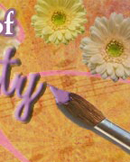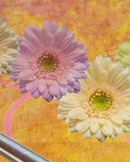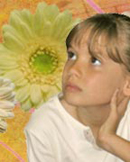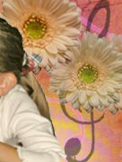 The passion that a teacher feels for the subject is often transferred to the student as inspired and motivated learning. We all remember our teachers who were especially connected to the content they were teaching and, as a result, motivated us with the same enthusiasm. David Spangler, Ph.D. Nova Southeastern University
The passion that a teacher feels for the subject is often transferred to the student as inspired and motivated learning. We all remember our teachers who were especially connected to the content they were teaching and, as a result, motivated us with the same enthusiasm. David Spangler, Ph.D. Nova Southeastern University
Sometimes students demonstrate creativity by "doing their own thing." This week's activity gives you a chance to be creative. Click on the daisy to begin.
Welcome to Week 4! This week we will be concentrating on the creative learning environment.
We all have experienced stepping into a classroom that immediately grabs our interest and attention. Lots of student work on display, areas of interest in the room (learning centers), the latest technology infused into the classroom, resources and materials organized and easily accessed by students, learning “noise” among groups working together, and a teacher who is so excited about what he or she is teaching that it’s contagious. But, do all these things make the classroom environment creative, or is that creative environment actually a product of creative people exercising a creative process? Could you teach in a room without “stuff” and still be creative?
The challenge we face in gifted education today is compelling. We must rebalance our educational system to meet the needs of our gifted students in order to foster a creative learning environment. This means balance the curriculum (not place too much emphasis in one subject area), balance within the subject areas, and balance between the school and the real world. Over the next two weeks we will look at the physical components of a creative learning environment as well as the classroom climate necessary to nurture and develop creativity.
As Ken Robinson explains in his book, Out of Our Minds, “Creativity is a process, not an event.” In a creative environment, whether it be a school or business, he indicates that there are three crucial features to focus on: the importance of finding the right medium for your own creative strengths, the necessity of being able to control the medium, and the need for freedom to experiment and take risks.






